Galaxy
A galaxy is a massive, gravitationally bound system that consists of stars, stellar remnants, interstellar gas, dust, and dark matter. These systems can range in size from a few thousand to over a trillion stars. Galaxies are the building blocks of the universe and come in various shapes and sizes.
Types of Galaxies
There are three main types of galaxies:
- Spiral Galaxies: These galaxies have a distinct spiral structure with a central bulge and spiral arms. The Milky Way is an example of a spiral galaxy.
- Elliptical Galaxies: These galaxies appear as smooth, featureless blobs and range in shape from nearly spherical to highly elongated. They are composed mainly of older stars.
- Irregular Galaxies: Irregular galaxies do not have a distinct shape and often appear chaotic. They may contain large regions of star formation.
Galaxy Formation
The exact process of galaxy formation is still a topic of active research. However, it is believed that galaxies formed from the gravitational collapse of gas and dust in the early universe. Over time, these collapsed regions evolved into the diverse range of galaxies we observe today.
Studying Galaxies
Scientists study galaxies using various techniques, including:
- Telescopes: Observing galaxies across different wavelengths of light, such as optical, infrared, and radio, provides valuable information about their composition, structure, and dynamics.
- Cosmological Simulations: Computer simulations help scientists model the formation and evolution of galaxies, allowing them to test different scenarios and compare the results with observations.
- Galactic Archaeology: By studying the chemical composition and age of stars within galaxies, researchers can piece together the history of galactic formation and evolution.
Key Concepts to Remember
When studying galaxies, it's important to understand the following key concepts:
- Galactic Structure: The different components of a galaxy, including the bulge, disk, and halo.
- Galactic Evolution: How galaxies change over time due to processes such as star formation, interactions with other galaxies, and the influence of dark matter.
- Galactic Classification: The Hubble sequence that categorizes galaxies based on their visual appearance.
Study Tips
When preparing for a test or exam on galaxies, consider the following study tips:
- Review the characteristics of each galaxy type and be able to identify examples of each.
- Understand the evidence for the existence of dark matter in galaxies and its role in galactic dynamics.
- Practice interpreting images of galaxies taken at different wavelengths to understand their properties.
- Stay updated on current research in galactic astronomy to appreciate the latest discoveries and developments in the field.
◂Science Worksheets and Study Guides Eighth Grade. Understanding Weather
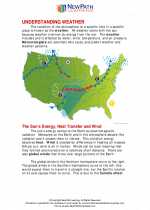
 Activity Lesson
Activity Lesson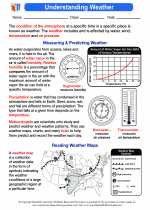
 Worksheet/Answer key
Worksheet/Answer key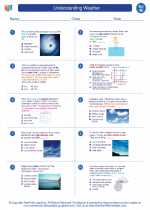
 Worksheet/Answer key
Worksheet/Answer key
 Worksheet/Answer key
Worksheet/Answer key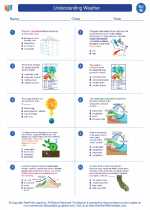
 Worksheet/Answer key
Worksheet/Answer key
 Vocabulary/Answer key
Vocabulary/Answer key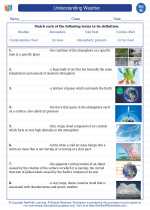
 Vocabulary/Answer key
Vocabulary/Answer key
 Vocabulary/Answer key
Vocabulary/Answer key
